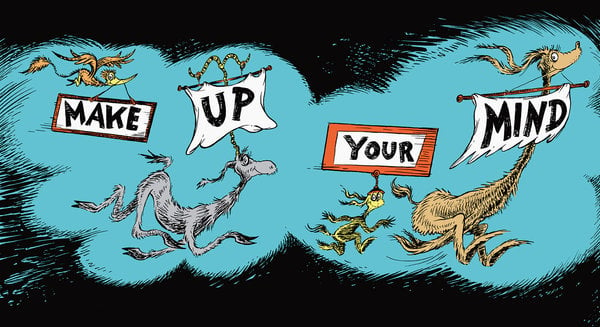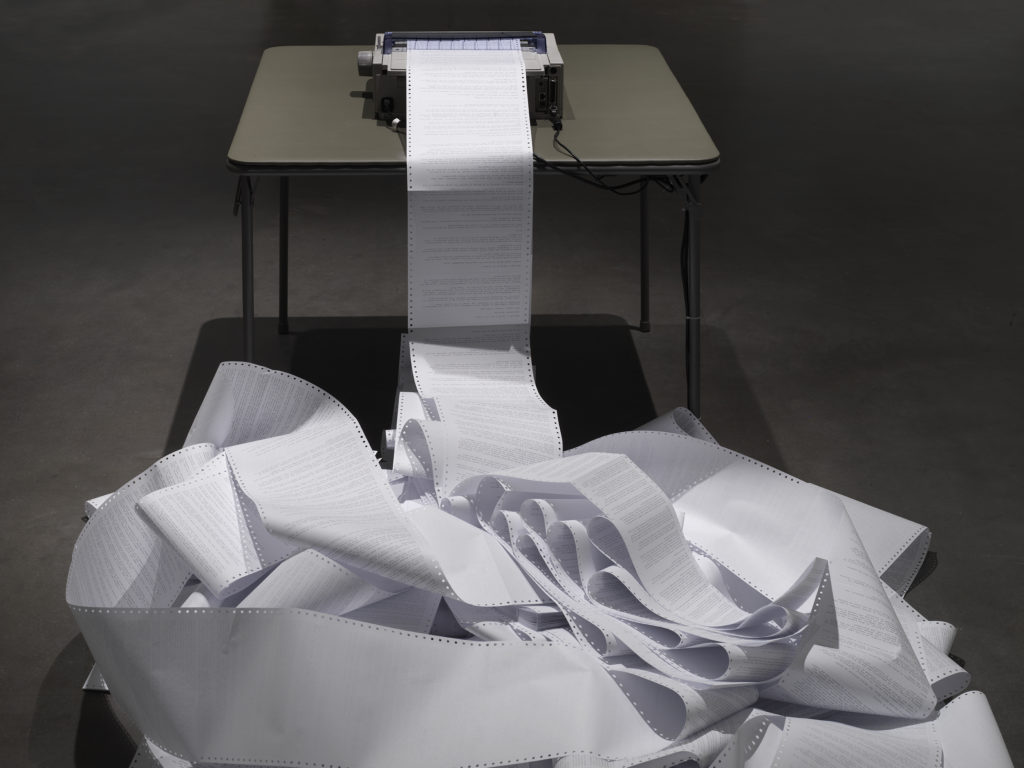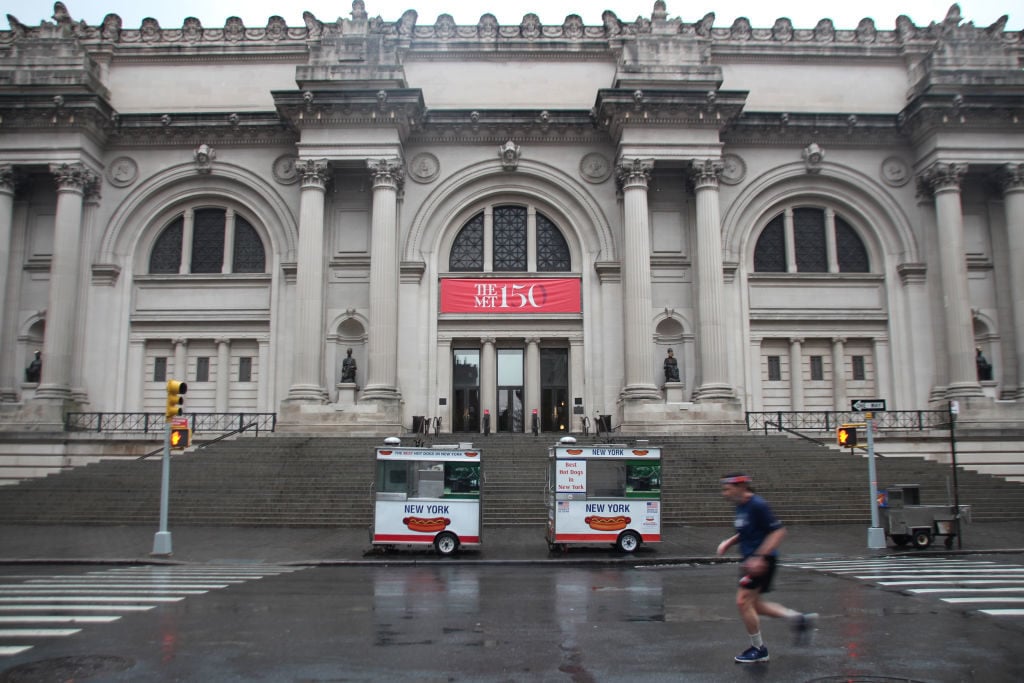Have you ever wondered what your rights are as an artist? There’s no clear-cut textbook to consult—but we’re here to help. Katarina Feder, a vice president at Artists Rights Society, is answering questions of all sorts about what kind of control artists have—and don’t have—over their work.
Do you have a query of your own? Email [email protected] and it may get answered in an upcoming article.
I was pleased to see both the Metropolitan Museum of Art and the San Francisco Museum of Modern Art apologize for posting images of Glenn Ligon’s work to their social-media feeds without his permission. I know that it was in support of Black Lives Matter, but once I heard they didn’t ask first, it struck me as wrong. Was it illegal as well?
Those two museums made a mistake, and as you pointed out, subsequently apologized.
For the most part—and this often comes as a surprise to people—museums don’t actually own the reproduction rights to works in their collection. The artist retains the underlying copyright to the work and any reproductions of it unless he or she agrees to sign it over (remember artists: don’t do it!).
It doesn’t matter if the work is hanging in the home of a private collector, locked in a storage unit in Brooklyn, or displayed prominently on the walls of a famed institution. When a museum wants to post an image from their collection, they are almost always obligated to seek the artist’s permission.
On his own Instagram, Ligon responded to the wave of posts: “I know its #nationalreachouttoblackfolksweek but could y’all just stop. Or ask me first?”
It seems that institutions were allowing the work of this American legend to do the heavy lifting for them on a subject that they found challenging to address directly. (It’s worth noting that Ligon is often associated with a movement known as “post-black,” a term he helped coin, which aims to push back against the oversimplification of art and identity.)
We can all learn from this flub on the part of museums. Let’s do our best not to exploit, or even simplify, the life’s work of creators for a quick social-media fix. And if you’re uncomfortable asking for permission, maybe that means the post wasn’t such a good idea in the first place.
I want to ask about something that’s always bugged me about the “Blue Lives Matter” movement. How are its supporters able to appropriate the Punisher logo for those stickers you see on the backs of cars? In addition to the fact that it makes no sense, as the Punisher is a vigilante who’s job is to shirk, not uphold, the law, they seem to be messing with the copyright of an entity owned by the Walt Disney Corporation. How do they get away with it?
Whether the gruesome Punisher skull should be adopted by anyone, let alone the police, is a moral question we can get into later. Whether it can be adopted is a legal question I’ll tackle first.
The character of the Punisher was created by Gerry Conway, John Romita Sr., and Ross Andru in 1974 under the aegis of Marvel Comics, which owns the copyright and trademark rights to the character and the skull logo that emanated from it. (It was not customary for artists working for Marvel to retain copyrights to their work.)
This raises an obvious question: if Marvel owns the copyright, then why do we see infringements everywhere? The answer has to do with a very important aspect of copyright protection, and that is enforcement.

Punisher clothing from the Thin Blue Line. Photo courtesy of the Thin Blue Line, Inc.
To address copyright enforcement, allow me to direct your attention to another iconic comic character: Bill Watterson’s Calvin, of Calvin and Hobbes fame.
Watterson’s creation was the subject of a shady 1990s pre-Instagram meme—a bumper sticker that pictured Calvin sporting a devilish grin and peeing on things that the car’s owner disapproved of. These were obvious knock-offs; Calvin never looked quite right and the image was in total opposition to the tone of Watterson’s comic strips, which was quite philosophical and soulful.
Because these decals were being produced and shared by hundreds of individuals across the country—and because Watterson never officially licensed Calvin’s image for merchandising—cease-and-desist letters amounted to a costly game of whack-a-mole. As a spokeswoman for United Press Syndicate, the company that distributed Calvin and Hobbes, explained in 1998, “When you license a character, then you increase the number of attorneys who keep a lookout and protect the images.”
This brings us back to Marvel and the Punisher. It would seem that at some point, Disney, which owns Marvel, did a cost-benefit analysis in terms of how much they might make off these lawsuits versus how much they’d spend to litigate them—not to mention what they might lose from boycotts of their movies by cop fans—and decided they could live with the infringement.
It is a real pity, however, that the Punisher has been adopted by those who have been tasked with upholding the law. The skull logo is reminiscent of the “Totenkopf,” a skull-and-crossbones symbol worn by the SS during the Second World War. When modern agents of authority wear it, one begins to question what ideals they’re protecting.

Dr. Seuss, What Pet Should I Get? Photo: courtesy Random House Children’s Books.
I make children’s books. I know I own the US copyright to a book I illustrated, but now the images are being sent to an ebook converter in India. How do I protect my art in countries outside the US? Does US copyright cover this?
Ah, children’s books. You absorb our drool and teach us to read. You inspire a love of literature that burns long into adulthood. Then we share these beloved stories with our own children… in the form of big-budget Hollywood films that pad out a 30-page book with, like, ten subplots.
Just as your copyright would be protected if your book were optioned into a movie, so it remains durable in its translation to ebooks and the Indian market.
On paper, India’s dedication to copyright is actually more rigorous than our own. The country joined the Berne Convention for the Protection of Literary and Artistic Works, the world’s most significant international copyright instrument, in 1928, well before the US followed suit in 1989. The Berne Convention has three underlying principles:
- A member country must extend the same treatment it offers its own creators to citizens of other member countries.
- The convention requires member countries to adopt certain minimum standards for copyright protection.
- If the work in question has fallen out of copyright in its country of origin, it may be denied protection in a member country.
So how do you enforce your rights, which are particularly important for ebooks, which are frequently the victims of piracy? As an American creator, I would (perhaps unsurprisingly!) advise you to join Artists Rights Society, which has reciprocal relationships with more than 40 sister societies around the globe.
Unfortunately, ARS has no sister society in India that I can direct you to, so I would recommend getting in touch with a local intellectual property lawyer to help you navigate the nuances of enforcement (which could cost a lot of $$$). With any luck, your ebook will become a massive smash and you will be able to reap the financial rewards. Does Bollywood do adaptations?

“Hans Haacke: All Connected,” 2019. Exhibition view: New Museum, New York. © Hans Haacke / Artists Rights Society (ARS), New York. Photo: Dario Lasagni
I just learned about this thing called the Projansky contract. What are the pros and cons of it? With all this money floating around the art market, why aren’t more artists using the Projansky contract or something like it?
If you care about making sure artists are paid, then the Projansky contract—sometimes called “The Artist’s Reserved Rights Transfer and Sale Agreement”—is indeed a wonderful thing. Basically, it’s a contract between the artist and the initial buyer that guarantees that 15 percent of any return on the work goes back to the artist after a resale. That means if an artist sells a painting for $30,000 with a Projansky contract attached, and the buyer resells it later for $100,000, the artist would net $10,500 (15 percent of the upside) from the deal.
The contract was created by the conceptual art dealer Seth Siegelaub and the lawyer Robert Projansky in 1971 in response to a series of high-profile auction sales including the Robert Scull collection, which absolutely blew people’s minds when it made $2.2 million. (Even with inflation, that would only be equivalent to $12.7 million today, so, yes, the market has grown a lot since then.)
The contract had a number of boosters, including the artist Hans Haacke. (Haacke, who still uses it today, added some additional terms, including that he had to approve loans to group exhibitions and that he could borrow any work for exhibitions of his choosing for 60 days out of every five years.)
Critics of the contract, meanwhile, say it hurts business. “The last thing I was interested in,’” artist Mel Bochner said of the Projansky contract, “was the formation of more bureaucracy, of another kind of art police.”
If the US government adopted a Federal Resale Royalty—a law, like those in place in some 80 countries worldwide, that requires a percentage of the resale price return to the artist—much of this discussion would be moot. Although an appeals court struck down a version of this law in California in 2018, ARS has co-authored a resale rights bill presently before Congress (but goodness knows they have a lot on their hands at the moment).
“We never expected this to become the standard of the art world, but we wanted to raise the subject and maybe influence some legislation,” Projansky himself told the New York Times in 1974. Here, here.










